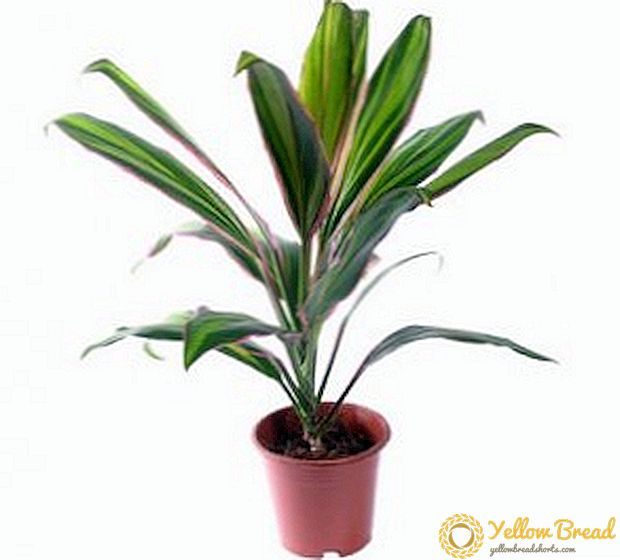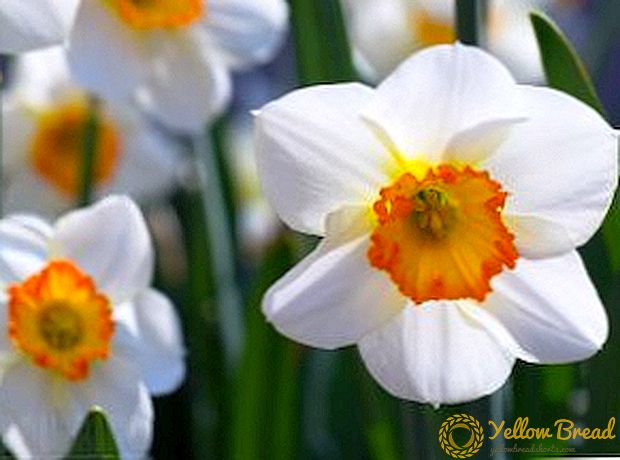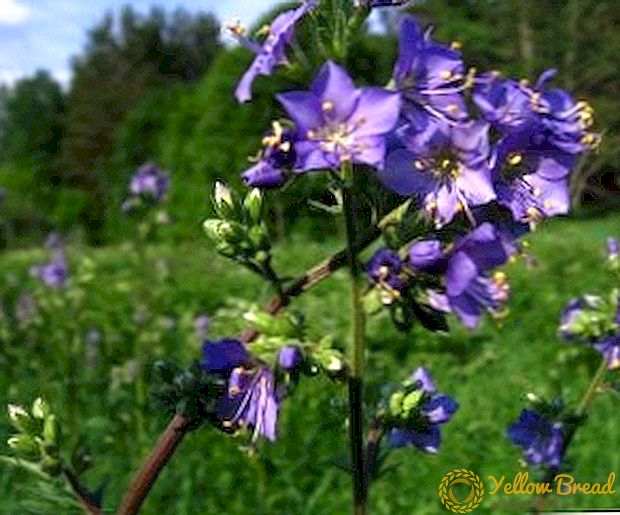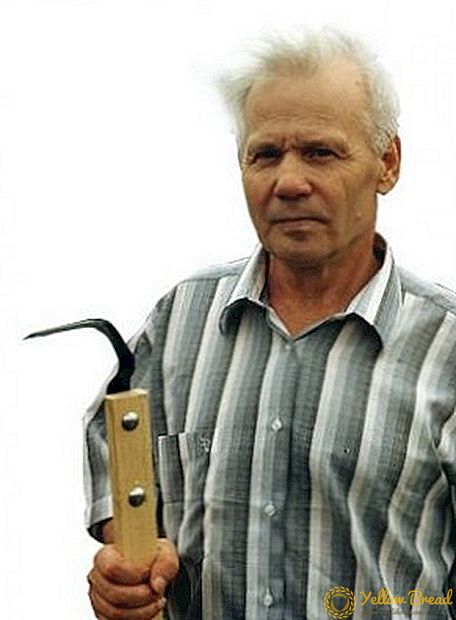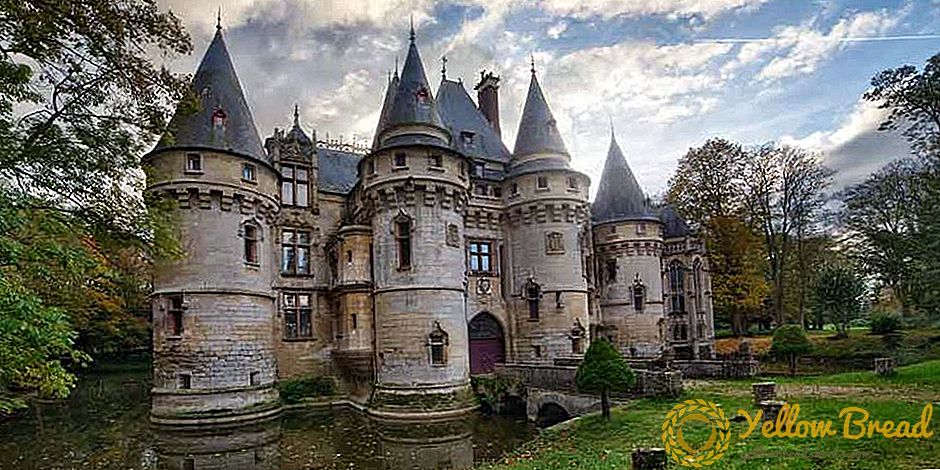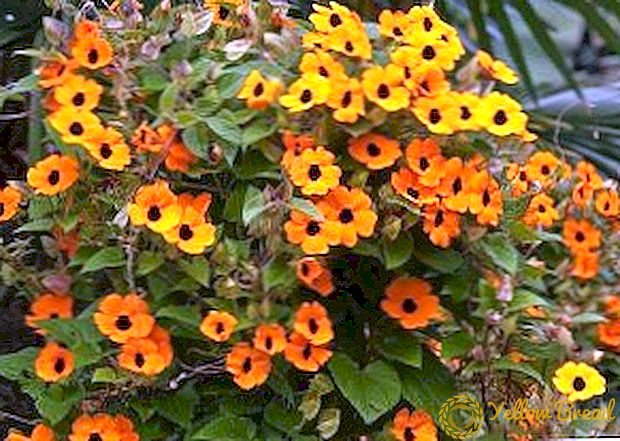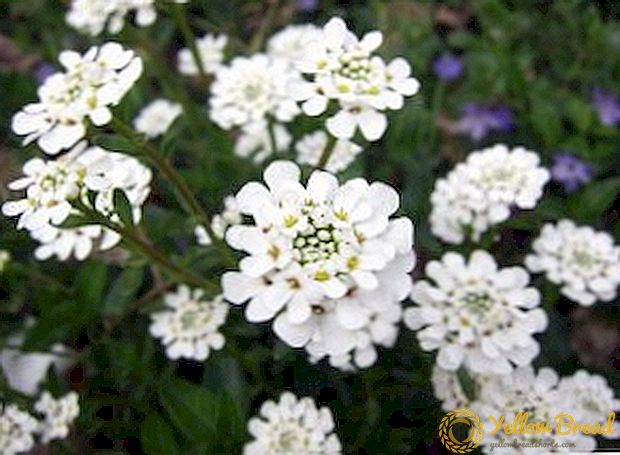 Iberis evergreen is a perennial herb of the cruciferous family (cabbage), numbering up to 40 varieties. The second name - Iberian, pepper, stennik, razlelepestnik. In the natural environment it grows in the mountainous regions of Asia, the countries of the Mediterranean, in the Caucasus, in the Crimea and the lower reaches of the Don.
Iberis evergreen is a perennial herb of the cruciferous family (cabbage), numbering up to 40 varieties. The second name - Iberian, pepper, stennik, razlelepestnik. In the natural environment it grows in the mountainous regions of Asia, the countries of the Mediterranean, in the Caucasus, in the Crimea and the lower reaches of the Don.
- Secrets of growing Iberis evergreen in his garden
- Description and features of evergreen iberis
- The most popular varieties of iberis evergreen
- Planting Iberis Evergreen Seeds
- Planting seeds for seedlings
- Sowing in open ground
- Other ways of breeding Iberis evergreen
- Cuttings
- Division of rhizomes
- Choosing a location and partners for iberis
- Iberis care tips in your garden
- Preparing Iberis Evergreen for Winter Colds
- Resistance of Iberis evergreen to diseases and pests
In the garden, Iberis resembles small rounded white clouds that are speckled by other vegetation. Iberis looks aesthetically and very impressively, it is perfectly combined with many types of flowers and shrubs,it smells nice and subtle. At the same time growing iberis in the garden does not require any special costs or time.
Secrets of growing Iberis evergreen in his garden
For many years, we have known iberis as a garden, park, lawn culture. This plant is unpretentious and has excellent decorative qualities. But for his breeding you need to know some subtleties. 
Description and features of evergreen iberis
It looks like a small branched spherical bush, 20-50 cm tall. Leathery, oblong, separately-pinnate or simple, shiny and evergreen leaves. Iberis is a plant that overwinters with foliage and "wakes up" in the spring with leaves. Flowers - silvery or milky-white, small -1-1.5 cm in diameter, collected in umbellate inflorescences up to 40 pcs. in each. The fruit is a bivalve flat pod with light yellow seeds, which germinate for four years. In 1 g of seeds - up to 450 seeds. It blooms twice: the first bloom of Iberis lasts about 3-4 weeks in April-June, the second - in the middle of August. In flowering diameter of one bush Iberis - 80-100 cm. The root system is pivotal. It grows to 10 years in one place.
Iberis is of low nutritional value of the soil, but it takes root and blooms better on stony, sandy, loamy soils.
The most popular varieties of iberis evergreen
Snowflake - neat small bushes up to 30 cm in height with snow-white flowers. Flowering - in April.
Findel (Findel) - pyshtsvetuschie ball-shaped bushes 25 cm in height.
Little Jam (Little Gem) - dwarf varieties, miniature half-poses not higher than 12 cm.
Planting Iberis Evergreen Seeds
Plant seeds in two ways - directly into the ground or germinating seeds to form young plants.
Planting seeds for seedlings
For seedlings, seedlings are sown in containers in mid-late March. To do this, choose permeable, moderately dense, not loose soil. You can purchase land for seedlings. The use of organic fertilizers is not necessary. The soil is watered, evenly sprinkled on top of it with seeds, and then the seeds are slightly sprinkled with earth (a layer not higher than 2 mm) and covered with glass or film.Greenhouse conditions are created in a covered container - a mode necessary for seed germination when they are optimally and constantly moistened. 
Water carefully, preferably with a sprayer, as the soil dries. After 10-12 days shoots are shown, which should be thinned out at excessive density. Planting of iberis seedlings - after reaching the stem 6-7 cm in height. Before this, pinch off the tip and plant sprouts along with a mud ball from the container into the ground.
Sowing in open ground
 In the south, where there is no frost, the seeds can be sown in winter in the late fall. In other areas in the spring, after the cessation of frost and warming. When sowing, take into account the climate of each individual region and the severity of winter, different in different years. On average, this is April or May. The depth of the planting holes is 6-10 mm, the seeds are poured with a thin line and covered with earth. Watered moderately. After germination (usually after 14-18 days), the sprouts are thinned, the width between them should be 15-20 cm.
In the south, where there is no frost, the seeds can be sown in winter in the late fall. In other areas in the spring, after the cessation of frost and warming. When sowing, take into account the climate of each individual region and the severity of winter, different in different years. On average, this is April or May. The depth of the planting holes is 6-10 mm, the seeds are poured with a thin line and covered with earth. Watered moderately. After germination (usually after 14-18 days), the sprouts are thinned, the width between them should be 15-20 cm.
Other ways of breeding Iberis evergreen
Cuttings
Cuttings of plants are cut already after flowering, planted in containers or pots, they create a greenhouse regime, left in a bright place. The cuttings are taken last year's upper 5-8 cm long, 3-4 cuttings can be placed in one container. Planting evergreen iberis in the open field is carried out in the fall (then the plant is warmed for the winter) or in the spring of next year.
Division of rhizomes
 This method is also called the division of the bush. They spend it in early spring, separating the stalks of the bush from each other and shortening the top by about 1/3 - this will help the plant to settle down better in a new place.
This method is also called the division of the bush. They spend it in early spring, separating the stalks of the bush from each other and shortening the top by about 1/3 - this will help the plant to settle down better in a new place.
They select for transplantation the most magnificent and strong half-jacks.
Choosing a location and partners for iberis
Suitable for alpine slides, stony gardens, stone grounds, looks great in combination with wild stone and decorative stonework. Borders and a border of iberis in flower beds and flower beds look striking. Evergreen iberis is combined with saxifrage, studded with phlox, sedum, rocky alissum. Also different kinds of iberis planted together look good.This method is not suitable due to over-pollination during flowering if it is planned to collect seeds from plants for breeding.
Iberis care tips in your garden
 By itself, Iberis is lush and grows well, therefore, when planning your garden, you need to calculate a place for it in advance. In general, the care of the plant is very simple. Watering in a timely manner, avoiding strong drying out of the soil, watering is always moderate. Fertilizing in the soil for iberis can not be made at all, but if you feed before flowering, it will be more friendly and abundant. It is necessary to remove the flowering inflorescences and cut the stems after flowering by a third. After five years of iberis, it is better to sit down - otherwise the flowers will become smaller.
By itself, Iberis is lush and grows well, therefore, when planning your garden, you need to calculate a place for it in advance. In general, the care of the plant is very simple. Watering in a timely manner, avoiding strong drying out of the soil, watering is always moderate. Fertilizing in the soil for iberis can not be made at all, but if you feed before flowering, it will be more friendly and abundant. It is necessary to remove the flowering inflorescences and cut the stems after flowering by a third. After five years of iberis, it is better to sit down - otherwise the flowers will become smaller.
Preparing Iberis Evergreen for Winter Colds
Collect the seeds, cut off the dried flowers, prune the stems - if you live in the southern regions where the winters are mild, nothing more needs to be done. If in the north, you should cover for the winter, for example, spruce branches.
Resistance of Iberis evergreen to diseases and pests
Iberes is sufficiently resistant to disease. But it may be affected by cabbage forger, mealybugs, cruciferous flea flowers and fungal diseases of rhizomes with excessive watering. For the treatment of insect pests used garden insectoacaricides, which destroy the pests of iberis. And with root rot, the plant is uprooted and burned, then the soil is treated with disinfectants.
It is not difficult to care for iberis, and the aesthetic pleasure derived from its flowering is great. Iberis also often decorates houses and apartments. In the vase it exudes a delicate pleasant aroma.

